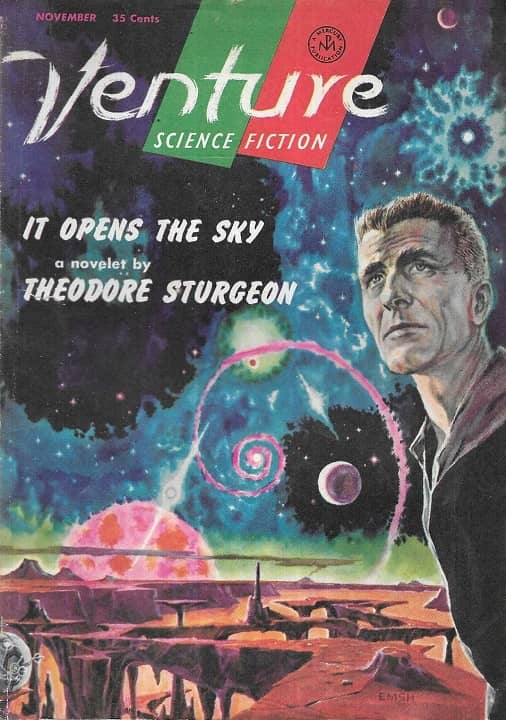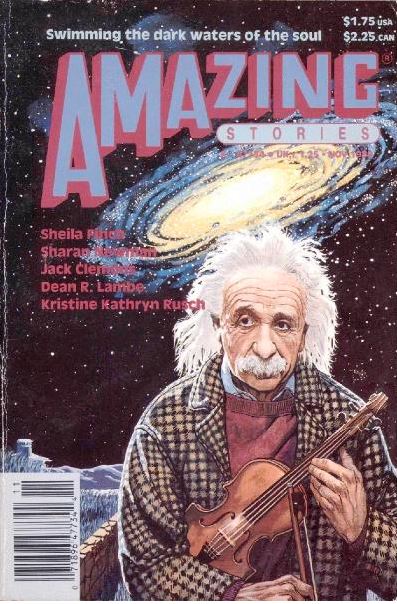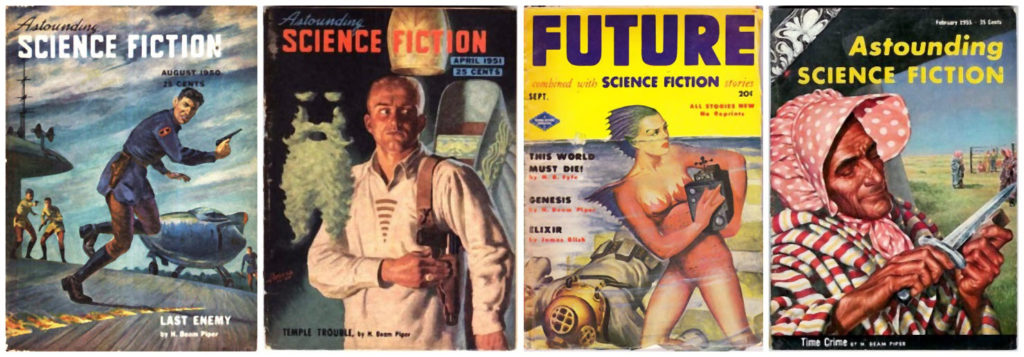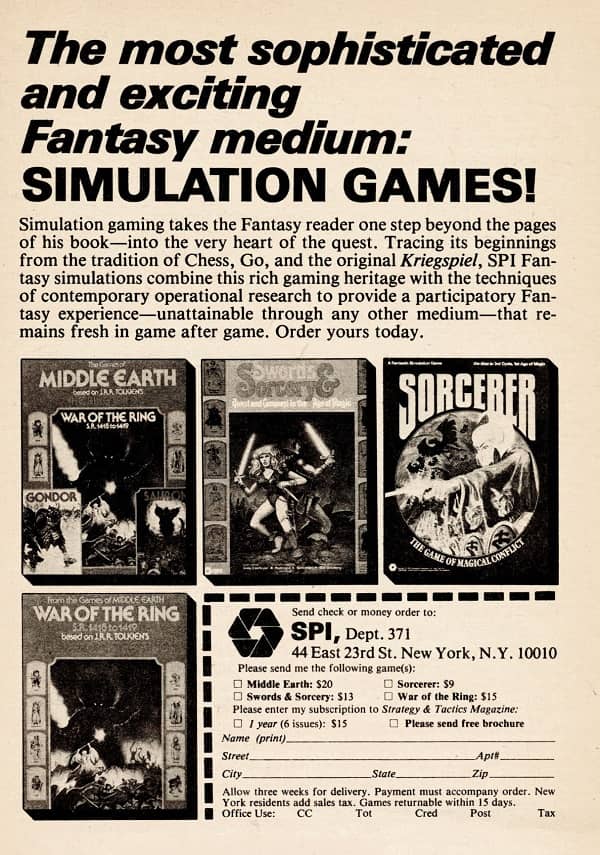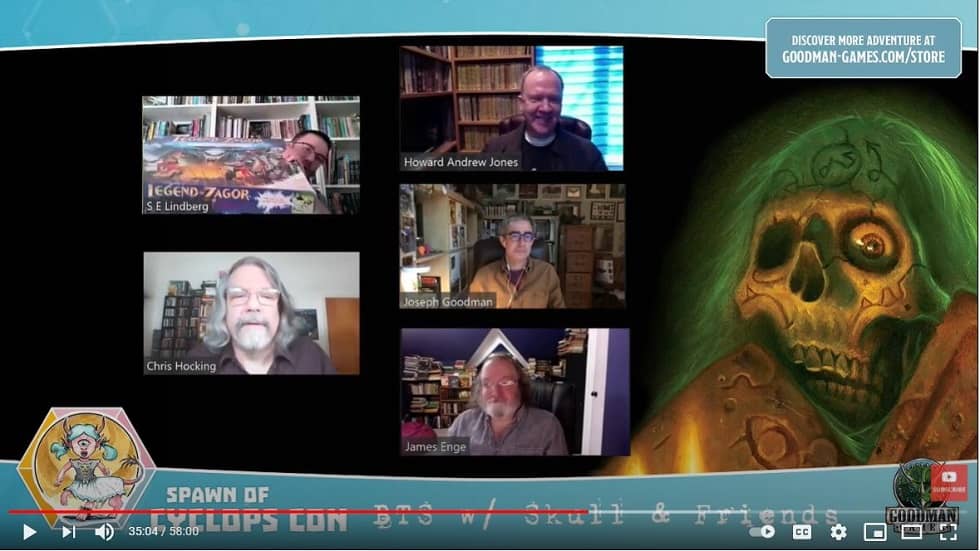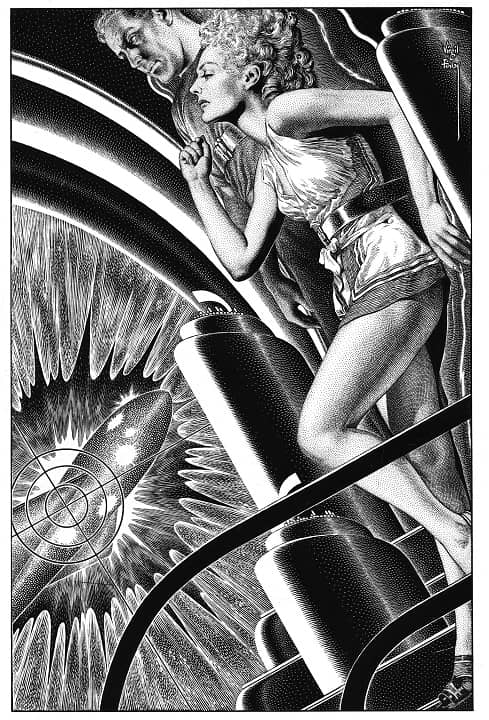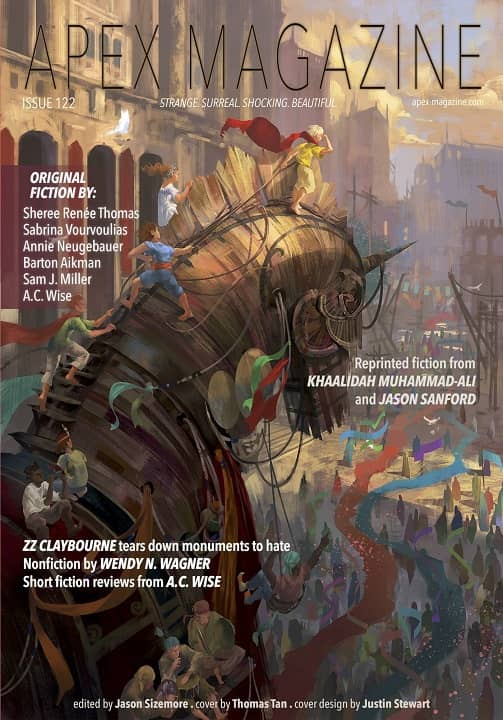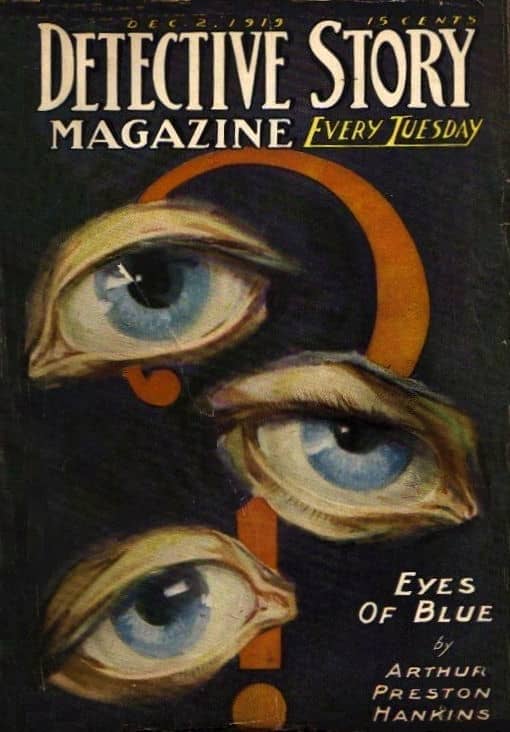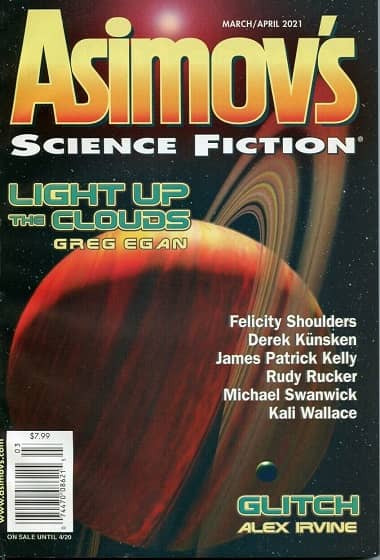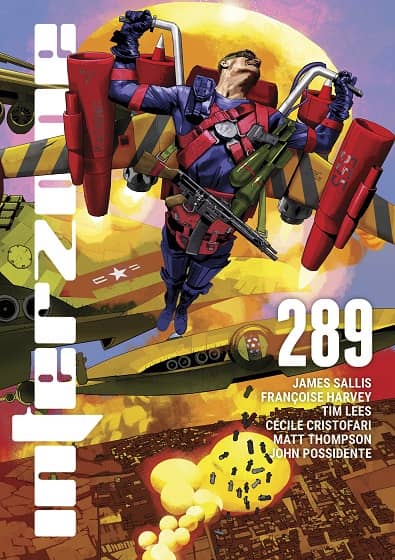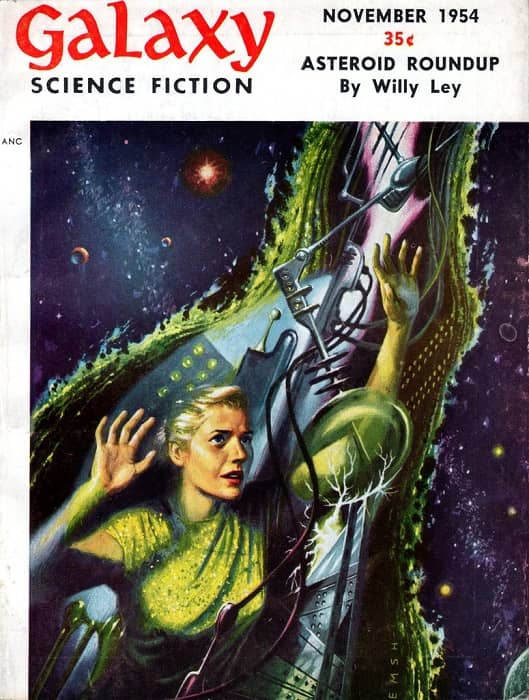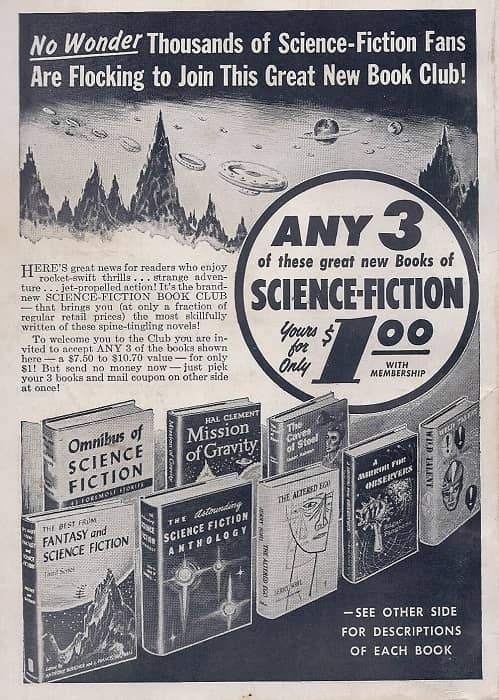Deadly Archeology on Alien Planets: “It Opens the Sky” by Theodore Sturgeon
Venture Science Fiction, November 1957. Cover by Emsh
In this series of essays I have been taking a close look at stories I find interesting, trying to figure out how they work. So far the stories (and one poem) I have discussed are pieces I find particularly good – and this is hardly surprising, as surely it’s better to know how and what good stories do than weak stories. But this time I’m taking a look at a story I enjoy, but that I also think deeply flawed. Why? Partly because it’s by Theodore Sturgeon, one of my very favorite writers. But also this story seems very Sturgeonesque – so I hope that I can understand better what Sturgeon tries to do in his most characteristic stories, and why sometimes even while he does what he wants to do the story qua story doesn’t wholly work.
My favorite Sturgeon stories are “The Man Who Lost the Sea,” “A Saucer of Loneliness,” and “And Now the News …”. There are other very good and very well-known stories by him: “Baby is Three,” “Mr. Costello, Hero,” “Bulkhead,” “Affair with a Green Monkey,” “And My Fear is Great …”. And there are early stories that seem less truly characteristic of the mature writer, though they are still well-regarded: the SF Hall of Fame story “Microcosmic God,” horror stories like “It” and “Bianca’s Hands,” the possessed bulldozer piece “Killdozer.” I love a late ‘40s sense of wonder thing, “The Sky Was Full of Ships,” but that too is not core Sturgeon. But there are a few stories from his peak period, the 1950s, that have the emotional punch, and the moments of utter beauty, of the best of his work, but that for one reason or another don’t stick the landing. “The Golden Helix” is one. “The [Widget], the [Wadget], and Boff” is another – a novella that for half its length bids fair to be as good as anything he ever wrote, but which can’t quite find its way to a satisfactory resolution. And there is “It Opens the Sky,” the story I mean to treat here, which has pages of sheer loveliness, passages of great power, and a message that is Sturgeon at his most tender and optimistic. It is a story that brings me to tears, and yet frustrates me.
